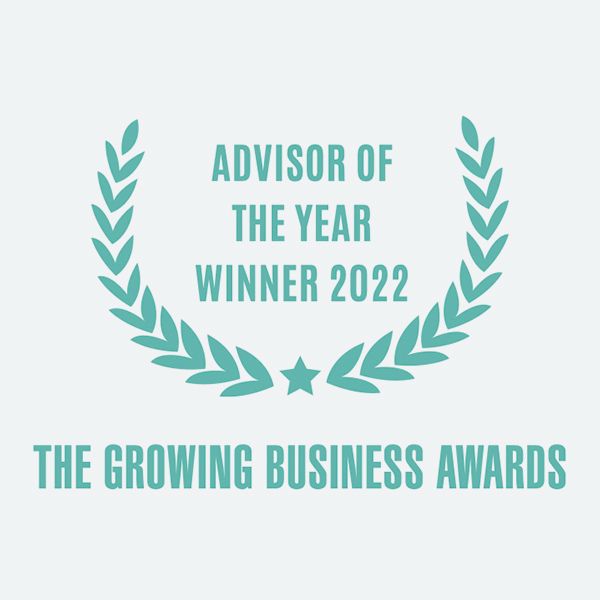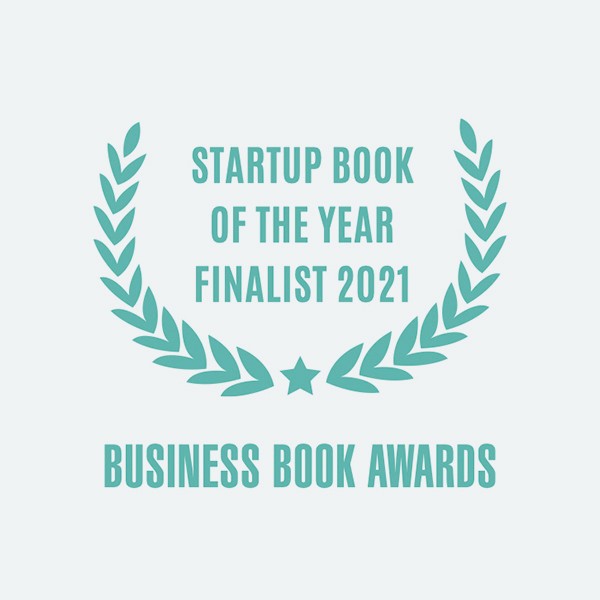
Expression of Interest Form
You don’t just want an investor to say they want to invest, you want it written in black and white. obtaining written expression of interest forms from investors is an excellent way to gain commitment during an investment round. It turns the verbal commitment into a written one, you find out what the investor is really thinking when you ask them to commit pen to paper (or fill in a digital form).
This is a vital asset, yet few entrepreneurs use them. At Robot Mascot we’ve supported hundreds of founders to develop an expression of interest form as part of their suite of pitch assets as they seek to secure investment.
This page will tell you exactly what you need to include in your expression of interest and how to create it.
The role of an expression of interest form
Securing funding can be as complex as it is difficult. Central to this quest is the expression of interest (EOI) form, a tool that, while seemingly simple, plays a pivotal role in bridging the gap between founders and potential investors.
An EOI form is essentially a document that investors fill out to formally indicate their interest in investing in a startup. Think of it as a prelude to more binding commitments – it’s not a contract, but it’s more than just a handshake. This form serves as a tangible expression of an investor’s intent, laying the groundwork for further discussions and negotiations.
The process begins when a startup presents its vision, business model and growth potential – often at pitching events or through direct proposals. Interested investors respond by submitting an EOI form. This step, although preliminary, is essential. It transforms a verbal nod of approval into a documented expression, adding a layer of seriousness to the proceedings.
Why is this important? For starters, it provides founders with a clearer picture of where they stand. In the ever-shifting sands of startup financing, certainty is a rare commodity. The EOI forms offer a semblance of this certainty, allowing founders to gauge the level of interest and enthusiasm in the investor community for their venture.
These forms can also help build momentum. When a startup can demonstrate that it has multiple EOIs, it often attracts additional interest. It’s a psychological lever: investors are more inclined to consider a venture seriously when they see others showing interest. This bandwagon effect can be a powerful catalyst in closing a funding round successfully.
EOIs can serve as a buffer against the unpredictability of investment rounds. Not all expressions of interest will convert into actual investments. By accumulating more EOIs than the required funding amount, startups create a safety net. If some investors back out – a not uncommon occurrence – the surplus of initial interest can compensate for these dropouts, keeping the funding round on track.
What’s in an expression of interest form?
Collectively, each component of your EOI should provide a comprehensive picture of the investor’s intentions and capabilities, while also setting clear expectations for the next stages of the investment process.
Here’s a breakdown of the typical components and their roles:
Investor details
It’s important to establish a formal line of communication and understand who is showing interest in the startup, so this section captures basic information about the investor, including name, contact details, and affiliation.
Investment amount range
Here, investors indicate the range of funds they might consider investing which gives founders a sense of the financial scale any given investor is comfortable with committing. This helps determine how much of the total investment round the investor can fund. This could be the whole ask, or a portion of it – leaving you to find additional investors to complete the round.
Investment type
Investors specify the type of investment they are considering, such as equity, convertible notes, or debt financing. This information is key to understanding the terms and conditions that investors might expect and helps in aligning their interests with the startup’s funding strategy. For UK founders it is important here to determine if investors are seeking (S)EIS shares.
Shareholder Style
Can we add a bit here about determining if the shareholder is going to be passive or active, and how that could be a crucial deciding factor for the founder in taking on an investor?
Reason for interest
This section allows investors to articulate why they are interested in the startup. It provides valuable insights into what aspects of the business are attracting investors, which can be useful for future pitches and business strategy refinement.
Additional contributions
Capturing the investor’s expertise and potential value beyond the capital, such as mentorship or industry connections, can be vital added value that persuades a founder to select one investor over another.
Declaration
This section requires investors to self-declare as either high-net-worth individuals or sophisticated investors. This declaration serves to confirm that the investors are aware of and comprehend the associated risks, and possess the financial capacity to bear potential investment losses.
How to develop an expression of interest form?
An effective expression of interest form has multiple roles, so it’s important to develop an effective document to deliver these roles. At Robot Mascot, we help entrepreneurs develop expression of interest forms as part of our PitchReady service so we’re well versed in developing EOI forms that perform.
Here’s a step-by-step guide to developing an EOI form:
1. Define your objectives
- Before drafting the form, be clear about what you want to achieve with it. Are you looking to gauge financial commitment, understand investor motivations, or collect basic contact information? Your objectives will shape the form’s content.
2. Gather essential elements
- Based on your objectives, decide on the key elements to include in your form. Typically, this would involve investor details, investment amount range, type of investment, and any additional value they can bring to the table beyond capital..
3. Draft the form
- Start drafting your form. Ensure it is clear, concise, and professional. Use straightforward language to avoid any misunderstandings. Each section should be distinct and logically ordered.
4. Include investor details section
- Begin with a section for basic investor details such as name, contact information, and affiliation. This is essential for establishing a line of communication.
5. Investor details
- This should include their full name, contact information, and any relevant organisational affiliations. It’s important to ensure that this part of the form is straightforward to allow for easy completion and accuracy.
6. Investment range
- Here, investors should indicate the financial bracket within which they are willing to invest. This could be presented in ranges, such as £10,000-£50,000, £50,000-£100,000, etc. This information is vital for assessing the potential financial impact on your startup and aids in financial planning and forecasting.
7. Investment type
- This section should delve into the nature of the investment the individual is considering. Options might include equity, convertible notes, or debt financing.
8. Shareholder style
- Incorporate a section where investors can describe their preferred style as shareholders. Are they hands-on or silent investors? Do they expect regular updates or are they content with annual reports?
9. Reason for interest
- Here, investors can articulate why they are interested in your startup. This could range from belief in the product or service, alignment with their own investment strategy, to personal interest in the industry.
10. Additional contributions
- Beyond financial investment, it’s important to understand what other contributions an investor might bring to the table. This could include industry expertise, networking opportunities, or strategic partnerships. Recognising these additional assets can be just as valuable as the financial investment itself.
11. Declaration
- Finally, a declaration section is essential. This part of the form should reiterate that the expression of interest is not a binding commitment from either party. It should also include any necessary legal disclaimers and a place for the investor to sign, acknowledging that they have understood and agreed to the terms laid out in the form. This section helps in setting clear expectations and protects both parties.
12. Review and refine
- Once your draft is complete, review it for clarity and completeness
13. Design
- Your EOI form should be both functional and visually appealing so that it’s user-friendly but also aligns with your brand’s aesthetic. Opt for a clean, professional layout that makes reading and filling out the form straightforward and use your company’s colour scheme and logo to reinforce brand identity.
14. Finalise and implement
- Ensure it is easily accessible to potential investors. Consider a PDF document that can be emailed or a digital ‘docusign’ version that can be completed online. You may even wish to turn your EOI into an online form using Google Forms or Jotform. These are great when pitching via video call. A printed version of the form is best for face-to-face meetings and events.
15. Follow up
- After receiving completed EOIs, follow up promptly. This shows professionalism and keeps the momentum going with potential investors.
Remember, the EOI form is just the beginning of the investment journey. It should be designed to open doors to deeper conversations and negotiations with potential investors.
Getting your business ready: Understanding Investment Readiness
Before you draft your expression of interest form to convert potential investors, you should ensure that your business is in fact ‘investment ready’. This readiness is a measure of how prepared your startup or business is to be seen as an appealing opportunity for investors. Being ‘investment ready’ means that a founder has aligned all the necessary elements that investors typically seek before they decide to invest.
While many of these elements pertain to the internal mechanics and fundamentals of the business, one key aspect is showcasing your readiness through well-prepared documentation, like the EOI form.
There are investor pitch services companies that can help businesses get ready for investment and develop their expression of interest form. We at Robot Mascot are one such company.
If you are on the path to seeking investment for your business and require assistance in developing a compelling EOI form, we invite you to get in touch with us.
Expression of interest FAQ
What is an expression of interest application form?
An expression of interest application form is a pivotal tool in the fundraising arsenal of startups and businesses, designed to formally capture initial interest from potential investors. This document not only facilitates the initial engagement between a business and its prospective financial backers but also plays a crucial role in assessing the level of commitment and seriousness of these parties.
By filling out the expression of interest application form, investors provide key details about their investment intentions, including the potential amount and type of investment they are considering. This process enables businesses to efficiently gauge and organise investor interest, laying the groundwork for more detailed discussions and negotiations. In essence, the EOI form acts as a bridge, connecting the aspirations of a growing business with the resources and confidence of potential investors.
Expression of interest form example
This is an expression of interest form example. This form can be customised to fit the specific needs and context of your business. It’s also advisable to have it reviewed by a legal professional to ensure it meets all necessary legal standards and accurately represents the intentions of both parties.
Expression of Interest Form
[Your Company Logo]
Company Name: [Your Company Name]
Introduction:
Thank you for your interest. This Expression of Interest form is a preliminary step for potential investors to indicate their interest in our business. Please note that completing this form does not constitute a binding commitment from either party, but it is a crucial step in us effectively managing our fundraising process.
Investor Details:
Full Name: _______________________________________
Company/Affiliation (if applicable): ________________________
Contact Information:
Email: __________________________________________
Phone: __________________________________________
Investment Investment Range:___________________
Seeking S(EIS) shares?
- Yes
- No
Reason for Interest in [Your Company Name]:
(Please provide a brief explanation of what attracts you to our business.)
Preferred shareholder style:
- Passive
- Active
In addition to capital, is there anything else you’re able to contribute towards the success of TLC?
- In order to invest you will need to self-certify as a high net worth / sophisticated investor. Tick to confirm this is ok.






Copyright ©Robot Mascot Ltd. All rights reserved.

